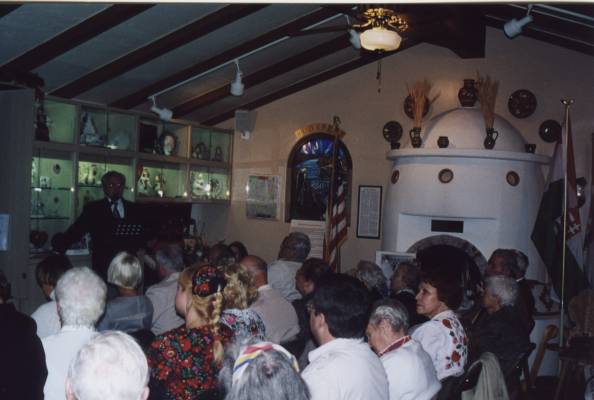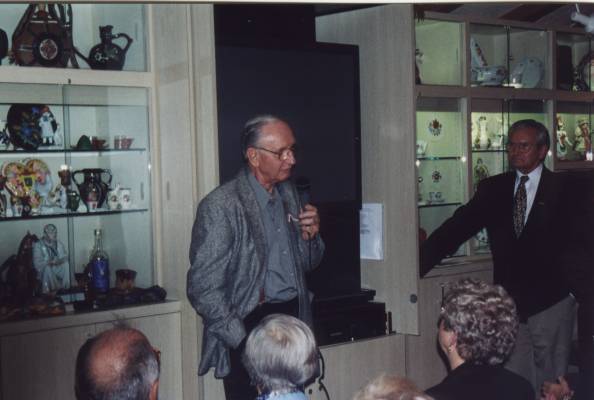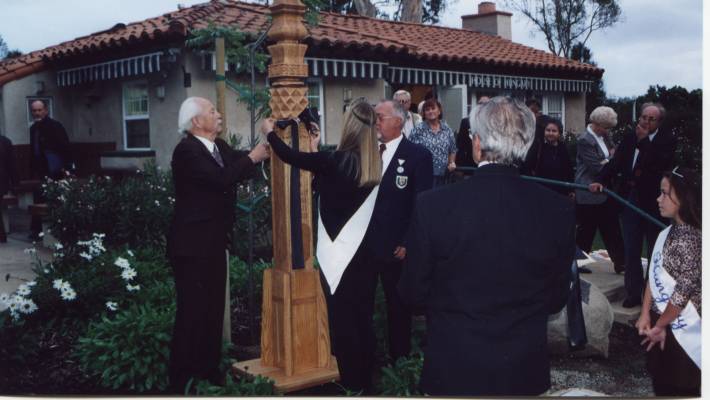
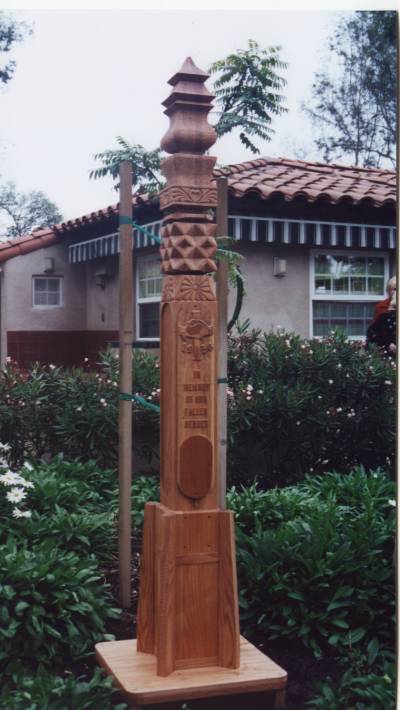
Emlékfát avattunk az 56-os hősök tiszteletére a Magyar Ház előtti kertben. A fa Sándor László tagtársunk javaslatára került a Haraszty emlékplakett mellé. Emlékeztet mindannyiunkat az 56-os szabadságharcra, valamint szimbolizálja a San Diego-i magyarság élő kapcsolatát a távoli Magyarországgal. A fa mellé helyeztük Török Tamás faragott kopjafáját, mely elmondása szerint Erdélyben mindig is a fennálló rendszerrel való szembenállást szimbolizálta. A gyász-szalagokat a Magyar Ház "királynője" és "hecegnője" helyezte el a kopjafán.
A házban rendezett ünnepélyen Tota Imre elnökünk az emlékektől elcsukló hangon elszavalt két korabeli verset, majd beszédében rámutatott, hogy az 56-os forradalom volt az első szeg a szovjet birodalom koporsójához.
A program Mikó József operatőr-rendező 56-os emlékeiből készített film vetítésével zárult. Mikó József személyesen is megtisztelt minket a jelenlétével, és a film utáni beszélgetésen kiemelte, hogy az 56-os forradalom mindig "tiszta" volt és maradt, bármennyire is próbálták azt befeketíteni. Nagy élmény volt nézni a képeket és felidézni az eseményeket, nemcsak az akkori résztvevők, hanem a történelmi igazságra éhes fiatalok szemével is.


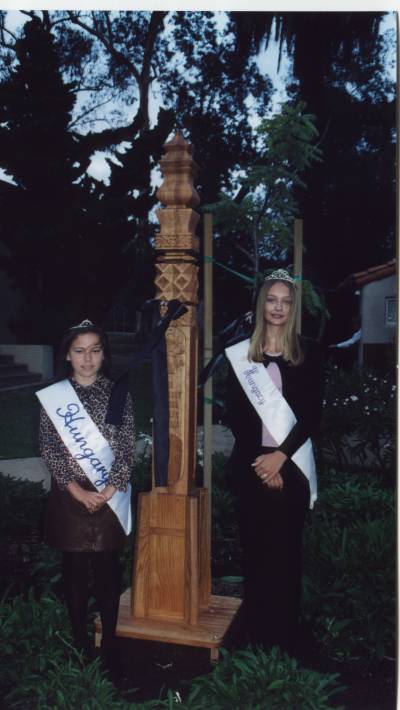

We dedicated a tree to the heroes of the 1956 revolution in front of the cottage. The tree was planted near to the Haraszty monument on the proposal of our member, Laszlo Sandor, and reminds everybody to the freedom fight in 1956. It also symbolizes the living connection between the Hungarians in San Diego and Hungary. Next to the tree we also dedicated a "kopjafa", a grandiose carved wood statue from Tamas Torok, who explained that such statues are used to mark graves in Erdely and they always symbolized a rebellion against the current government. The mourning bands were placed to the statue by the Queen and Princess of the House of Hungary.
At the ceremony in the house Imre Tota president recited two poems with fond emotion. The Hungarian revolution was the first nail in the coffin of the Soviet Empire, as he pointed out in his speech.
The program ended with the documentary film about Jozsef Miko's reminiscence from 56, who fall into and run with the events of the revolution and as a cameraman documented the freedom fight. Jozsef Miko who personally attended the screening underlined, that this revolution was always "clean" even if there were attempts to denigrate it. It was a great experience to watch the movie and recall the events, not only for the participants, but also for the youth being eager for the truth.
